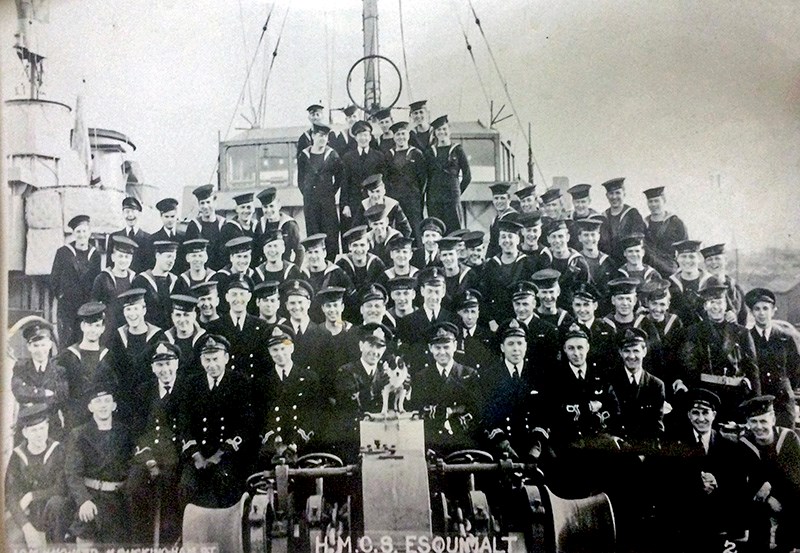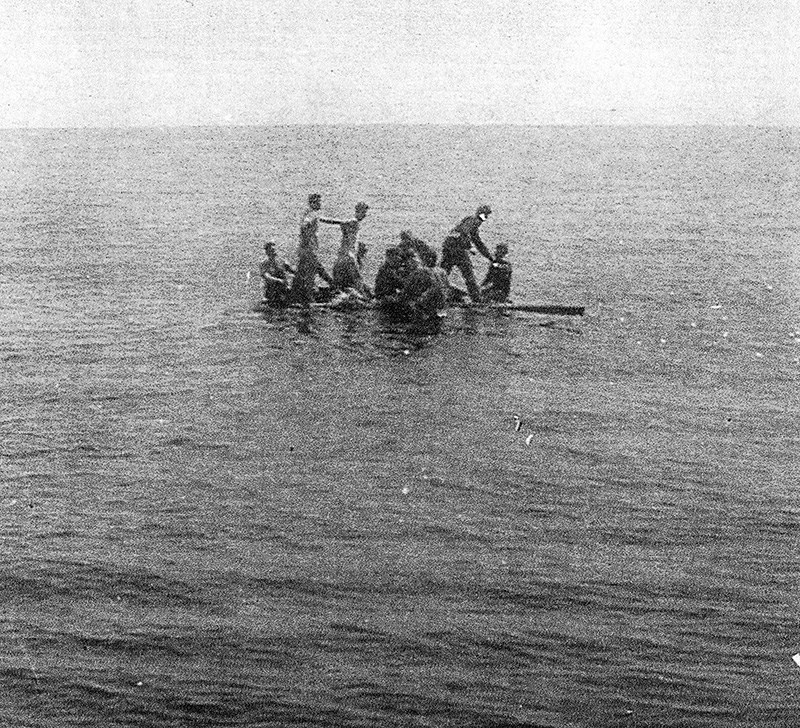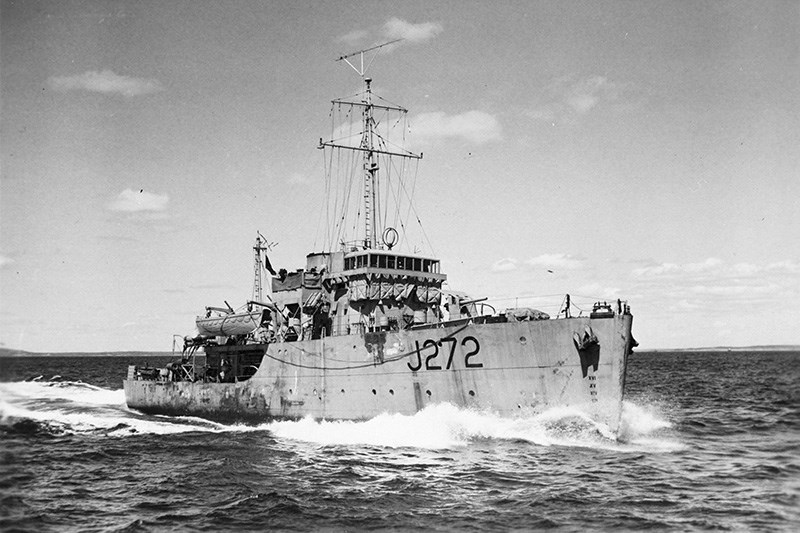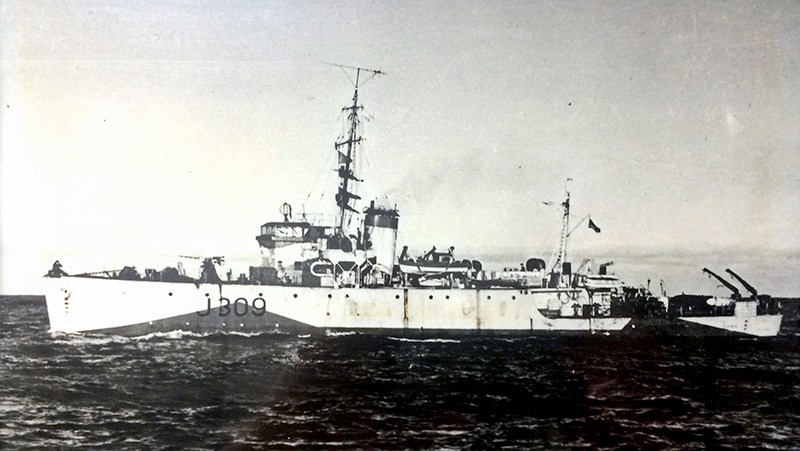Phil Egan
“At the going down of the sun and in the morning We will remember them.”
Lawrence Binyon, in his heartstring-tugging poem, For the Fallen, quoted above, included in the second stanza the lines,
“There is music in the midst of desolation And a glory that shines upon our tears.”
These words might perfectly reflect the drama that unfolded in the cold pre-dawn hours of April 16, 1945, three weeks before the end of the Second World War. The “music in the midst of desolation” on this day was the heroism of a warship named for this city as it arrived on the scene of the tragic sinking of HMCS Esquimalt.
His Majesty’s Canadian Ships Sarnia and Esquimalt were sister warships – Bangor-class minesweepers stationed off the approaches to Halifax harbour. On this day, their task was to rendezvous at sea at 8 a.m. in to perform a radar sweep for a convoy leaving Halifax at 8 p.m. that day.
At least two German submarines were known to be lurking in the area. One of them, U-190, was part of a flotilla of nineteen enemy subs strung along the eastern seaboard with orders to play havoc with allied shipping. The war in Europe was coming to an end, but Admiral Karl Donitz was determined to destroy Allied supply lines.
HMCS Esquimalt radioed her last report to Halifax Command at 6:27 a.m. Three minutes later, fearing she’d been spotted as Esquimalt bore down on her position, U-190 fired a torpedo. It struck Esquimalt in the stern engine room.
The ship lurched out of the water. The explosion, a ball of fury filled with fire, acrid smoke, water and men’s bodies, wrenched the vessel sharply to starboard. The ship’s communications shack was destroyed, and Esquimalt sank in four minutes, taking twenty-eight men to their deaths.
Forty-three survivors clung to life rafts, known as Carley floats, in the freezing water. Many were dressed only in their underwear. U-190 fled the scene.
When HMCS Esquimalt failed to rendezvous as scheduled, HMCS Sarnia tried to reach her by radio, then initiated a search. These efforts were delayed twice as Sarnia detected the presence of U-boats and responded with depth charges.
Wary of the hostile subs, Sarnia finally arrived on the scene. The survivors had now been in the water for over six hours. Sixteen men had already succumbed to hypothermia and exposure.
Leaving herself completely defenceless to submarine attack, HMCS Sarnia came to a stop in the frigid water, rescuing twenty-seven Canadian sailors and reclaiming some of the dead from the sea.
HMCS Esquimalt was the last Canadian warship lost to enemy action. Due to the heroism of the crew of HMCS Sarnia, more than two dozen men of her fated crew lived to see the end of the war.

Inquiry blamed ship’s captain
Phil Egan
Following the loss of HMCS Esquimalt, a naval board of inquiry was convened to question the survivors and officially determine the cause.
Forty-four men had lost their lives; 16 from the effects of spending more than six hours in the icy waters.
The disaster was made even more poignant by the fact that the war in Europe was rapidly coming to a close. Even worse, the proximity to Halifax and the offices of Atlantic Maritime Command made the delay in rescue operations almost inexplicable.
The survivors blamed Halifax. Somebody must have been, figuratively, asleep at the switch.
The board of inquiry found the Esquimalt captain, Robert Macmillan, responsible for the ship’s loss for failing to zigzag, and for failing to stream “cat gear,” a noise-making device towed astern to deflect sound-guided torpedoes away from a ship’s propellers.
There is some irony in my relating this story. The president of the inquiry was Lt. Cdr. R.W. Draney, DSC. Draney was the Captain of HMCS Prince Rupert, a ship on which my father served.
Today, just two of the men who were aboard the rescuing HMCS Sarnia survive. The both still regard the board of inquiry’s findings as a travesty and a whitewash – a dereliction of duty by the shore command.


